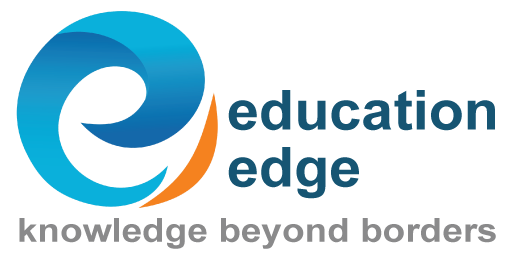Project Scope Management Office Read
Project Scope Management includes the processes required to ensure that the project includes all the work required, and only the work required, to complete the project successfully.
Managing the project scope is primarily concerned with defining and controlling what is and is not included in the project.
The knowledge area of Project Scope Management consists of the following seven processes:
|
Process Name
|
Project Management Process Group
|
Key Deliverables
|
|
Plan Scope Management
|
Planning
|
Scope Management Plan & Requirement Management Plan
|
|
Collect Requirement
|
Planning
|
Requirement Traceability Matrix
|
|
Define Scope
|
Planning
|
Project Scope Statement
|
|
Create WBS
|
Planning
|
Scope baseline
|
|
Validate Scope
|
Monitoring and Controlling
|
Accepted Deliverables
|
|
Control Scope
|
Monitoring and Controlling
|
Work Performance Information
|
• Product scope. The features and functions that characterize a product, service, or result
• Project scope. The work performed to deliver a product, service, or result with the specified features and functions.
• The scope baseline for the project is the approved version of the project scope statement, work breakdown structure (WBS), and its associated WBS dictionary
• A baseline can be changed only through formal change control procedures.
• Completion of the project scope is measured against the project management plan.
• Completion of the product scope is measured against the product requirements.
The Inputs, Tools and Techniques and Output of Plan Scope Management process are given below.
|
Project Management Plan
|
Expert Judgment
|
Scope Management Plan
|
|
Project Charter
|
Meetings
|
Requirements Management Plan
|
|
Enterprise Environmental Factors
|
|
|
|
Organizational Process Assets
|
|
|
- Plan Scope Management is the process of creating a scope management plan that documents how the project scope will be defined, validated, and controlled.
- This process describes how the scope will be defined, developed, monitored, controlled, and verified.
- The requirements management plan is a component of the project management plan that describes how requirements will be analyzed, documented, and managed.
The Inputs, Tools and Techniques, and Outputs of the Collect Requirements process are given in the table below.
|
Scope Management Plan
|
Interviews
|
Requirements Documentation
|
|
Requirements Management Plan
|
Focus Groups
|
Requirements Traceability Matrix
|
|
Stakeholder Management Plan
|
Facilitated Workshops
|
|
|
Project Charter
|
Group Creativity Techniques
|
|
|
Stakeholder Register
|
Group Decision Making Techniques
|
|
|
|
Questionnaires and Surveys
|
|
|
|
Observations
|
|
|
|
Prototypes
|
|
|
|
Benchmarking
|
|
|
|
Context Diagrams
|
|
|
|
Document Analysis
|
|
- Collect Requirements is the process of determining, documenting, and managing stakeholder needs and requirements to meet project objectives.
- The project’s success is directly influenced by active stakeholder involvement in the discovery.
- Requirements include conditions or capabilities that are to be met by the project.
- Requirements can be grouped into classifications allowing for further refinement.
- Requirements become the foundation of the WBS.
- Interview is a formal or informal approach to elicit information from stakeholders by talking to them directly.
- Focus groups bring together prequalified stakeholders and subject matter experts.
- Facilitated workshops are focused sessions that bring key stakeholders together to define product requirements.
- Brainstorming is a technique used to generate and collect multiple ideas related to project and product requirements. It is part of group creativity techniques.
- A group decision-making technique is an assessment process having multiple alternatives with an expected outcome in the form of future actions. Examples are Unanimity, Majority, Plurality and Dictatorship.
- Prototyping is a method of obtaining early feedback on requirements by providing a working model of the expected product before actually building it.
- Benchmarking involves comparing actual or planned practices to best practices of comparable organizations (internal or external).
- Requirements traceability matrix is a grid that links product requirements from their origin to the deliverables that satisfy them.
The Inputs, Tools and Techniques, and Outputs of the Define Scope process are given in the table below.
|
Scope Management Plan
|
Expert Judgment
|
Project Scope Statement
|
|
Project Charter
|
Product Analysis
|
Project Documents updates
|
|
Requirements Documentation
|
Alternatives Generation
|
|
|
Organizational Process Assets
|
Facilitated Workshops
|
|
- Define Scope is the process of developing a detailed description of the project and product.
- Define Scope process selects the final project requirements from the requirements documentation.
- The preparation of a detailed project scope statement builds upon the major deliverables, assumptions, and constraints that are documented during project initiation
- Product analysis includes techniques such as product breakdown, systems analysis, requirements analysis, systems engineering, value engineering, and value analysis.
- Alternatives generation is a technique used to develop as many potential options as possible
- The project scope statement is the description of the project scope, major deliverables, assumptions, and constraints.
The Inputs, Tools and Techniques, and Outputs of the Create WBS process are given in the table below.
|
Scope Management Plan
|
Decomposition
|
Scope Baseline
|
|
Project Scope Statement
|
Expert Judgment
|
Project Documents updates
|
|
Requirements Documentation
|
|
|
|
Enterprise Environmental Factors
|
|
|
|
Organizational Process Assets
|
|
|
- Create WBS is the process of subdividing project deliverables and project work into smaller, more manageable components.
- The WBS is a hierarchical decomposition of the total scope of work to be carried out by the project team to accomplish the project objectives and create the required deliverables.
- The planned work is contained within the lowest level of WBS components, which are called work packages.
- Decomposition is a technique used for dividing and subdividing the project scope and project deliverables into smaller, more manageable parts.
- A WBS structure may be created through various approaches. Some of the popular methods include the top-down approach.
- A bottom-up approach can be used during the integration of subcomponents.
- The WBS represents all product and project work, including the project management work.
- The total of the work at the lowest levels should roll up to the higher levels so that nothing is left out and no extra work is performed. This is sometimes called the 100 percent rule.
- WBS usually follow 8/80 rule of decomposition.
- Control accounts are placed at selected management points in the WBS.
The Inputs, Tools and Techniques, and Outputs of the Validate Scope process are given in the table below.
|
Project Management Plan
|
Inspection
|
Accepted Deliverables
|
|
Requirements Documentation
|
Group Decision Making Techniques
|
Change Requests
|
|
Requirements Traceability Matrix
|
|
Work Performance Information
|
|
Verified Deliverables
|
|
Project Documents Updates
|
|
Work Performance Data
|
|
|
Validate Scope is the process of formalizing acceptance of the completed project deliverables.
- The verified deliverables obtained from the Control Quality process are reviewed with the customer or sponsor to ensure that they are completed satisfactorily.
- The Validate Scope process differs from the Control Quality process.
- Inspection includes activities such as measuring, examining, and validating to determine whether work and deliverables meet requirements and product acceptance criteria.
- Deliverables that meet the acceptance criteria are formally signed off and approved by the customer or sponsor.
The Inputs, Tools and Techniques, and Outputs of the Control Scope process are given in the table below.
|
Project Management Plan
|
Variance Analysis
|
Work Performance Information
|
|
Requirements Documentation
|
|
Change Requests
|
|
Requirements Traceability Matrix
|
|
Project Management Plan Updates
|
|
Work Performance Data
|
|
Project Documents Updates
|
|
Organizational Process Assets
|
|
Organizational Process Assets updates
|
- Control Scope is the process of monitoring the status of the project and product scope and managing changes to the scope baseline.
- Controlling the project scope ensures all requested changes and recommended corrective or preventive actions are processed through the Perform Integrated Change Control process
- The uncontrolled expansion to product or project scope without adjustments to time, cost, and resources is referred to as scope creep.
- Variance analysis is a technique for determining the cause and degree of difference between the baseline and actual performance.
- Project performance measurements are used to assess the magnitude of variation from the original scope baseline.







